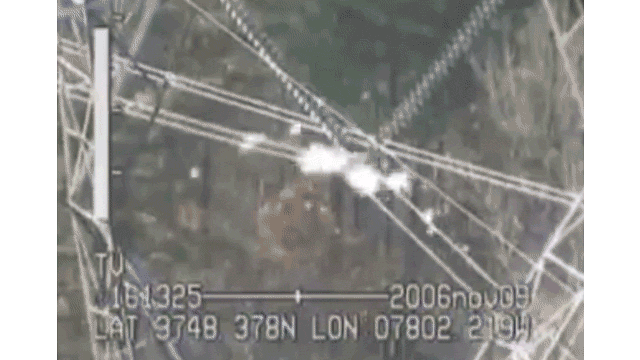We’ve known that most critters try to avoid power lines, but until recently, scientists were pretty much in the dark when it came to why. Now, it turns out that to animals, power lines and pylons look like terrifying bands of glowing, flashing bursts of light.
This revelation came about as the result of a recent study on wild reindeer in Norway. Apparently, reindeer’s eyes are able to detect ultraviolet light, which means they can see when power lines give off flashes of UV light — a phenomenon human eyes are completely blind to. What’s more, for those sensitive to it, these ultraviolet bursts are even visible in total darkness.
As Professor Glen Jeffrey of University College London explained to The Independent:
Reindeer see deep into the UV range because the Arctic is especially rich in UV light. Insulators on power lines give off flashes of UV light. The animals potentially see not just a few flashes but a line of flashes extending right across the horizon.
This is the first bit of evidence that explains why we think they are avoiding power lines.
The UV glow itself comes from a build up of ionized gas that commonly occurs at various points in high-voltage power cables. These build-ups — known as coronas (and seen below) — will eventually dissipate, causing the UV flash of light that can scare critters on the ground. But it’s not just reindeer, another recent study revealed that about 35 different species are sensitive to ultraviolet radiation.
Still, the problem isn’t just the fact that these glowing power lines can be unsettling; they may actually be causing animal communities to fragment.
Animals have always had a tendency to avoid power lines and related structures, but the reason behind their avoidance wasn’t clear — power lines are neither a physical barrier nor necessarily associated with humans. Now that we know animals can see in UV, though, it looks like we finally have our answer.
The videos above and below were captured by electric utility-owned helicopters with mounted UV cameras. Since flashes of ultraviolet light can be a symptom of conduction problems, companies regularly use this method as part of routine inspections. These cameras only capture a limited range of of UV light though, so what we’re seeing here barely begins to compare to what more highly UV-sensitive animals are witness to. It’s not hard to see how sudden explosions of light could frighten any number of forest creatures.
Now that we know what’s causing these animal communities to scatter, we can actually begin to require utility companies to consult with herders before the construction process begins. But more than that, this will hopefully act as a wakeup call — because whether or not we realise it, as cities expand, it’s often the displaced animals that end up paying the price. [The Guardian, The Independent]
